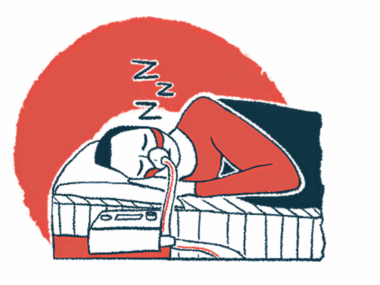Obesity Management Among Successful Supports for Patient With Heart Failure
Written by |

A multidisciplinary approach that included weight reduction through calorie restriction and diuretics, ventilation support, skin care, and rehabilitation successfully managed life-threatening right heart failure due to severe obesity in a young man with Prader-Willi syndrome (PWS).
These findings from a case study highlight not only the effectiveness of such a tailored approach, but also the importance of preventing severe obesity in adults with this condition through diet and hormonal counseling from childhood, the researchers noted.
The case report, “Tailored management of life-threatening complications related to severe obesity in a young adult with Prader-Willi syndrome,” was published in the journal Europe PMC.
The hyperphagia, or insatiable hunger, that characterizes PWS can lead to dangerous food-seeking behavior and severe obesity, which is associated with several life-threatening complications, such as obstructive sleep apnea (OSA) and pulmonary hypertension.
OSA occurs when throat muscles intermittently relax and block, or obstruct, the airway during sleep, leading to repeated and extended pauses in breathing.
The resulting low levels of oxygen can increase pressure in lung arteries, a condition called pulmonary hypertension, making the right ventricle of the heart work harder to pump blood through such arteries. Continuous strain in the right ventricle ultimately can lead to heart failure.
“Therefore, severe obesity is the most serious and most common problem contributing to morbidity and mortality in adults with PWS,” with previous research reporting respiratory failure (26%) and heart problems (19%) as the main causes of death in adult patients, the researchers wrote.
Now, a team of researchers at the Sungkyunkwan University School of Medicine’s Samsung Medical Center in South Korea reported the case of a 21-year-old man with PWS whose right heart failure due to severe obesity and OSA was successfully managed using a multidisciplinary approach.
The patient was diagnosed with PWS at the center at the age of 8, three to four years after he became obese and showed hyperphagia. He was started on standard growth hormone therapy.
At that time, obstructive sleep apnea also was detected, and his tonsils were removed at age 9 to facilitate breathing during sleep. Enlarged tonsils are a common cause of OSA. At 15, weighing 134.5 kg (about 296.5 pounds), the boy was diagnosed with type 2 diabetes, for which he started appropriate treatment.
Four years later, his blood oxygen levels dropped to 50% during sleep, and he was advised to undergo mechanical ventilation, but the patient showed poor compliance. Heart imaging showed normal ventricle size and contractile function, or the ability for self-contraction.
At 21 years old and weighing 185.7 kg (about 409.4 pounds), he was admitted to the emergency room due to shortness of breath and loss of consciousness.
He had low blood pressure, skin ulcers (open round sores), a bluish-purple color around the eyes, and skin rash on his whole body. He also had accumulated fluid in his lungs.
Further tests revealed pulmonary hypertension, an enlarged right ventricle, and reduced right heart function, leading to the diagnosis of cor pulmonale, a condition characterized by the enlargement and failure of the right ventricle of the heart that is most commonly caused by pulmonary hypertension.
The man was intubated and admitted to the intensive care unit (ICU), where he received multidisciplinary care, including ventilatory support, fluid control, caloric restriction, meticulous skin care, rehabilitation training, and nursing assistance.
The patient was on invasive ventilatory support for about a month, after which he received oxygen through a noninvasive nasal tube, particularly during sleep.
While his ideal body weight for his height was 60.5 kg (about 133.4 pounds), his medical team aimed at reaching 140 kg (about 308.6 pounds) — representing a 45 kg (almost 100-pound) reduction — as he had no respiratory problems with that weight two years earlier.
To achieve such weight loss, he was put on a calorie-restrictive diet of 1,500 kilocalories (kcals) per day. During the first two weeks, he received his nutrition directly through the bloodstream due to large amounts of food flowing back from the stomach into the mouth.
For the following month, he was fed with a special liquid food mixture administered directly into his gastrointestinal tract, after which he started an oral diet of 1,000 kcals per day. He also was on diuretics, also known as water pills, that help rid the body of excess liquid.
His ICU care also was challenged by his behavioral problems associated with PWS. At least four nursing staff, as well as sedative and antipsychotic medication, were needed to control his agitation and irritability.
After a month in ICU, “the patient was able to receive rehabilitation training while awake to retrain his body to perform basic movements,” and his skin ulcers healed, the researchers wrote.
He left ICU on day 36 and was discharged at a weight of 131.4 kg (about 289.7 pounds) — representing a loss of 54.3 kg (about 119.7 pounds) — on day 49, about 1.5 months after he was hospitalized.
Before discharge, the patient and his parents were educated on “[treatment] adherence, diet, oxygen therapy … only during sleep, and exercise training for muscle stretching and an active range of motion,” the scientists wrote.
His condition did not worsen, and he was not hospitalized during the following three years.
These findings highlight the effectiveness of a tailored comprehensive multidisciplinary approach in treating right heart failure due to PWS-related obesity, as well as the importance of preventing severe obesity in these patients from childhood.
To avoid obesity, a low-calorie and well-balanced diet must be introduced early on, “together with appropriate psychological and behavioral counselling for the family,” the team wrote.
Regular recreational activities to distract the patient from the search for food, restricting access to food and money, and regular exercise also help to control weight in these patients, the researchers said.






